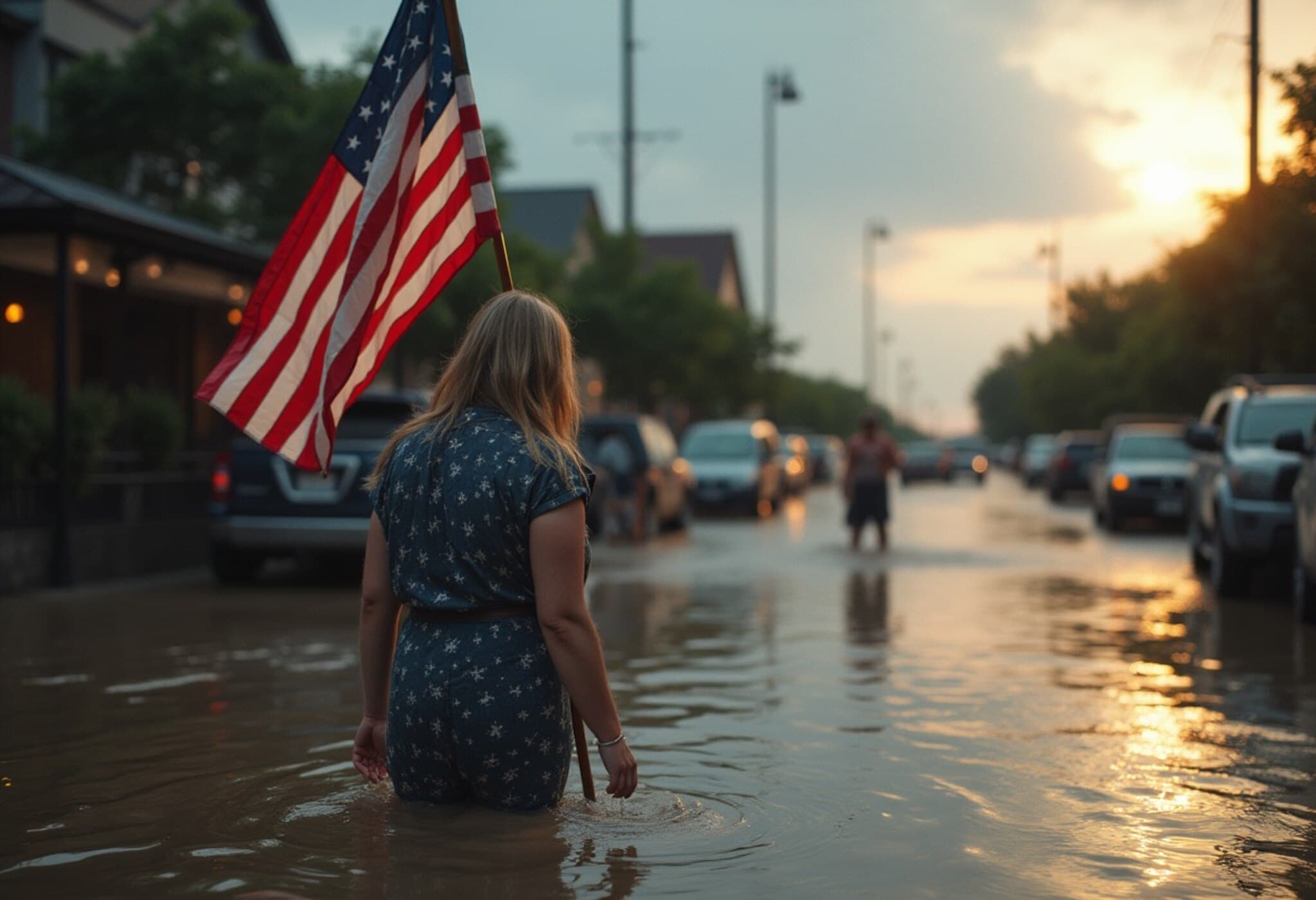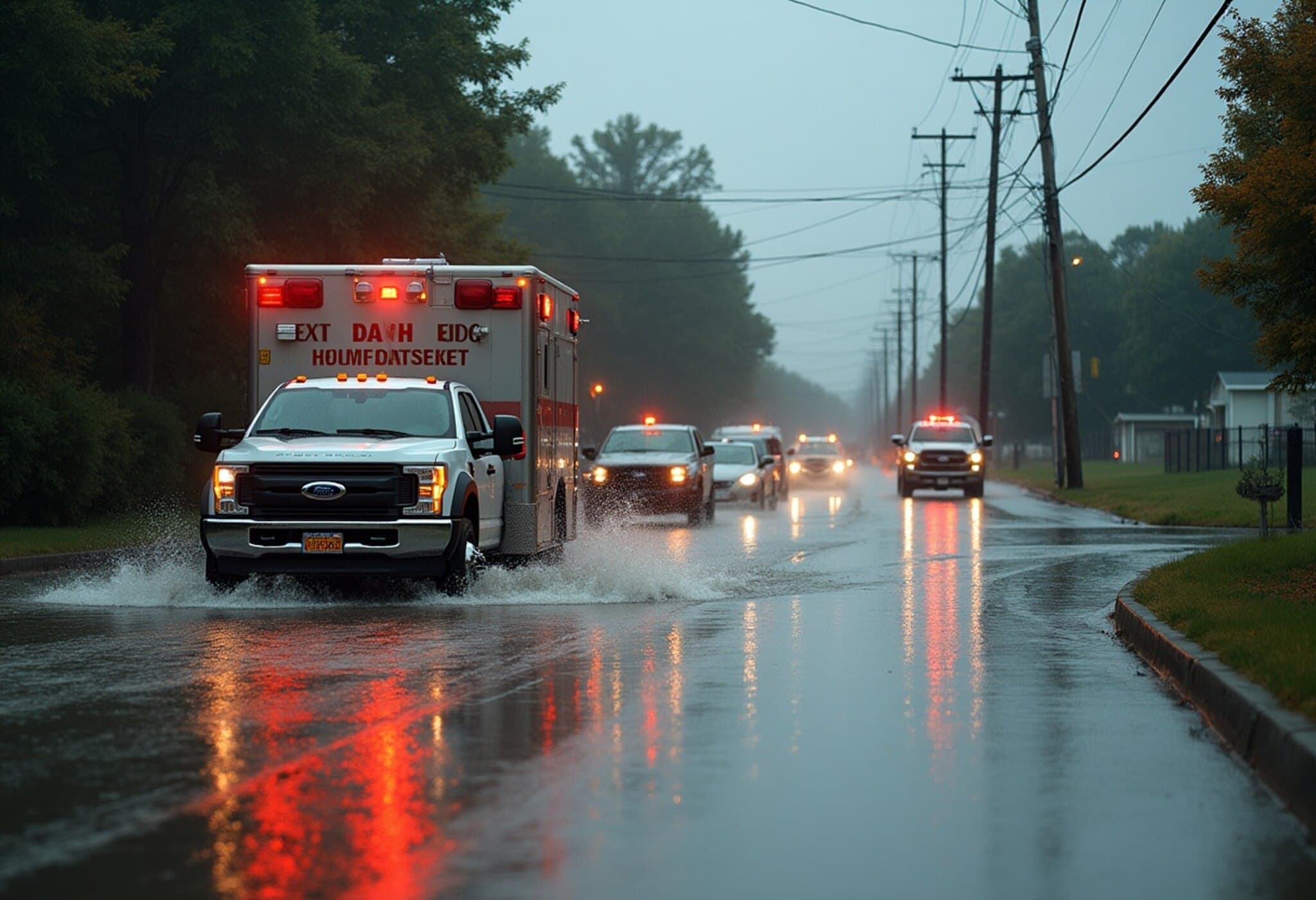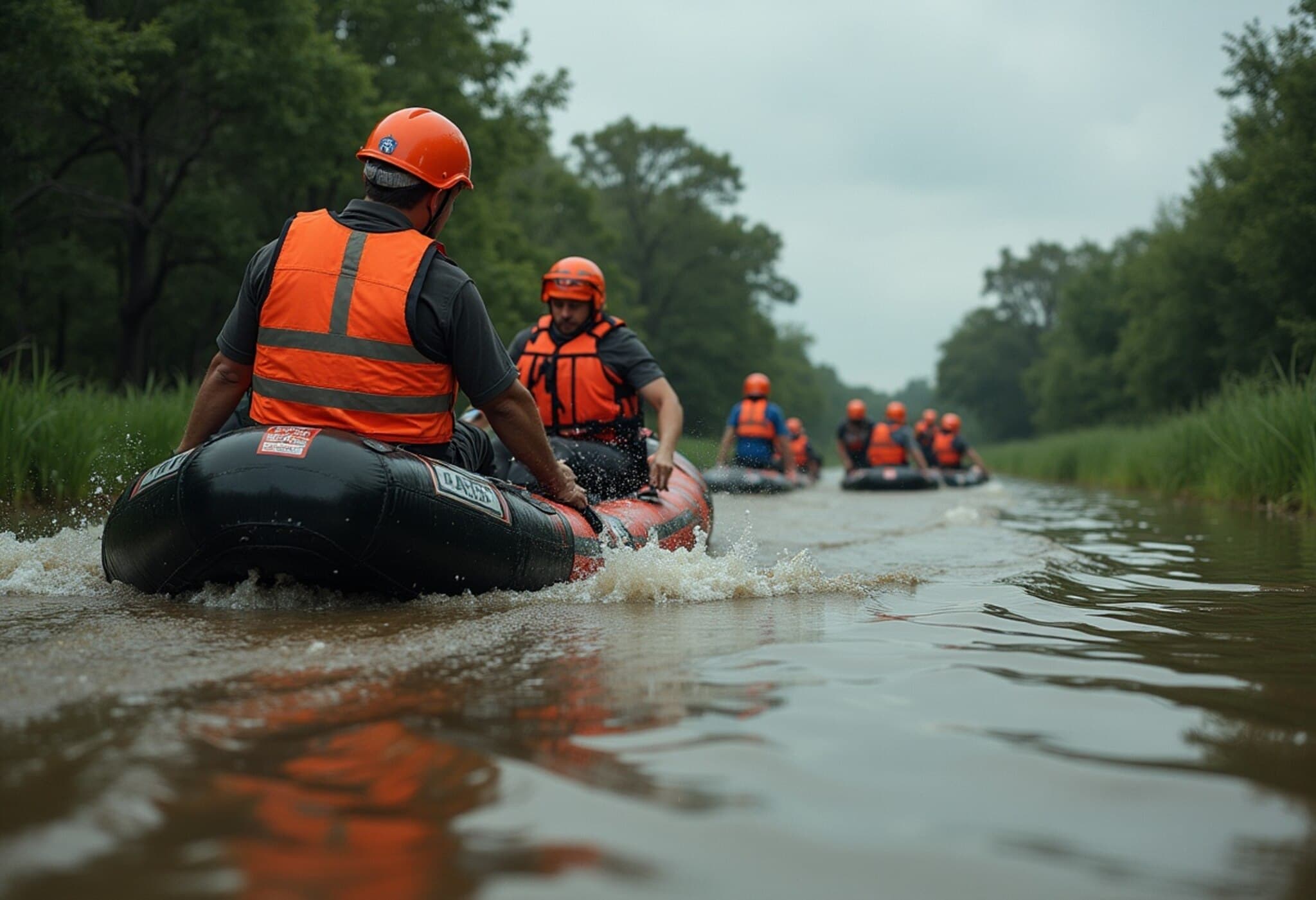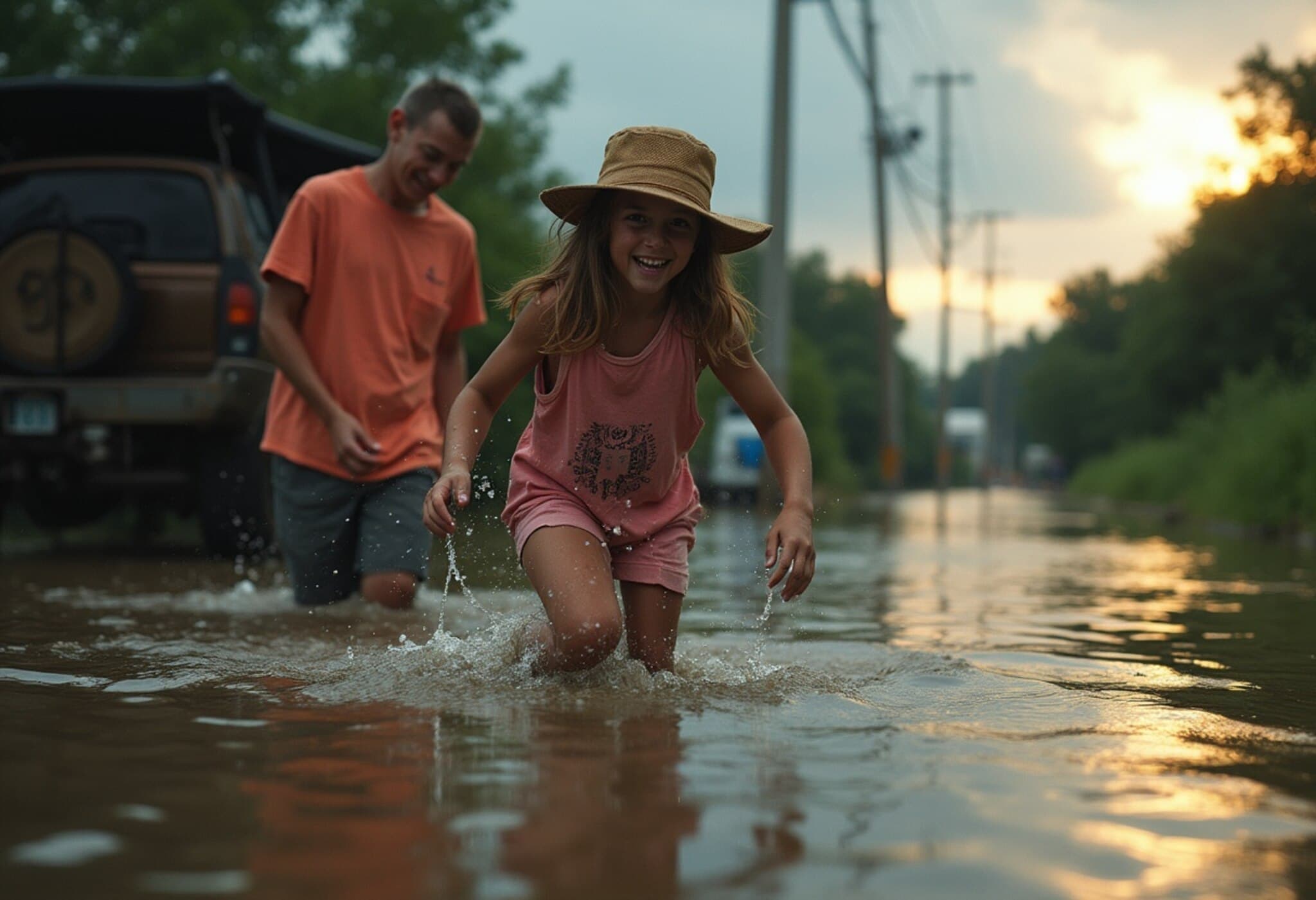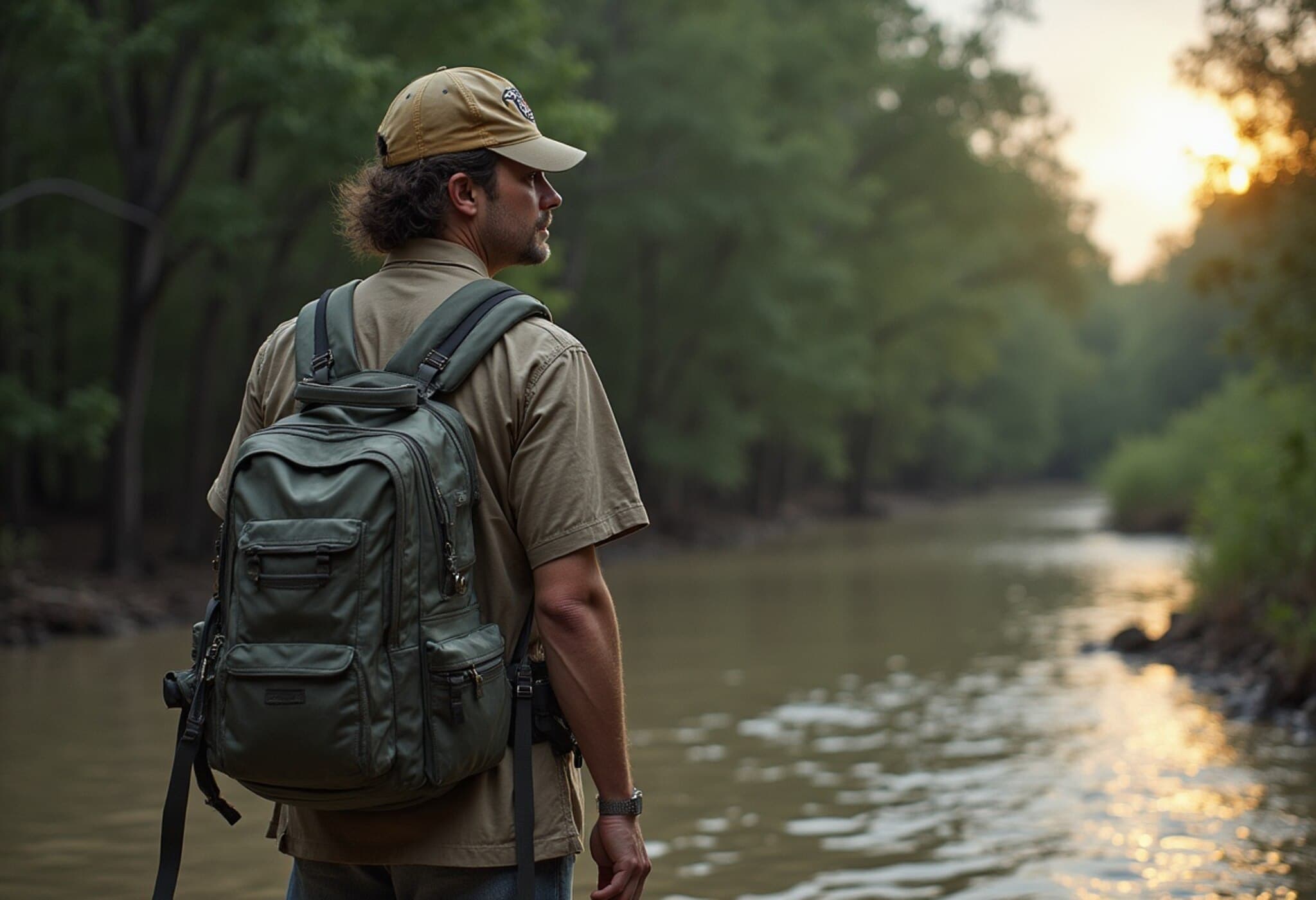Texas Hill Country Flash Floods Devastate Community
The grim aftermath of the devastating flash floods that swept through central Texas continues to unfold, with the death toll now tragically standing at 82 people. Among the hardest hit is Kerr County, situated in the scenic yet flood-prone Texas Hill Country, which has been identified as the epicenter of this natural disaster.
Sheriff Larry Leitha of Kerr County confirmed that the fatalities include 28 children, many of whom were attending a riverside Christian summer camp known as Camp Mystic. Distressingly, 10 girls and a counselor from this camp remain unaccounted for, sparking a desperate search operation that involves helicopters, boats, drones, and ground teams.
Ongoing Search and Rescue Amidst Rising Concerns
Across Texas, officials report 41 missing persons, though state authorities caution that these numbers may still rise as recovery efforts continue in flood-ravaged areas. Governor Greg Abbott, speaking during a Sunday press briefing, underscored the gravity of the situation and appealed for public patience as search efforts focus on locating survivors and recovering victims.
First responders have demonstrated remarkable courage and resourcefulness, rescuing more than 850 individuals within the first 36 hours following the floods. However, the persistent threat of additional flooding, amplified by ongoing heavy rains, has forced temporary evacuation of some volunteer teams, complicating rescue operations.
Unprecedented Flooding in a Vulnerable Landscape
The timing of the floods could not have been worse. Occurring during the July 4th holiday weekend, when many residents were asleep, the flash floods were triggered by a severe storm that dumped over 12 inches (30 cm) of rain overnight. Experts point to the dry, compacted soil of the Texas Hill Country as a critical factor worsening the flash flood impact—as it prevents water absorption, causing rapid runoff into local waterways like the Guadalupe River.
The National Weather Service had issued a flood watch on Thursday and escalated warnings with an urgent flash flood alert at 4 a.m. on the morning of the floods, highlighting a “severe threat to human life.” Still, the sheer volume and speed of flooding caught many off guard, especially in Kerrville City where water levels surged dramatically by 5:20 a.m.
Government and National Response
President Joe Biden extended his heartfelt condolences to those affected and announced plans to visit the disaster zone on Friday, emphasizing the federal government’s commitment to support Texans through this crisis. Governor Abbott has been coordinating closely with federal agencies to ensure adequate resources are deployed as recovery and relief efforts roll out.
Questions remain about the preparedness and infrastructure resiliency in flood-prone regions of Texas. This disaster highlights the critical need for improved flood mitigation strategies, especially in areas with highly permeable land that accelerates runoff. Local officials and disaster management experts are likely to face intensified scrutiny in the coming days.
Societal Impacts and Underlying Challenges
Beyond the immediate tragedy of loss of life and property, these floods expose the vulnerability of marginalized communities and summer camp attendees, who are often less able to rapidly evacuate. The psychological trauma on survivors, families of the missing, and first responders alike will be profound and long-lasting.
Moreover, the disaster prompts a broader conversation about climate resilience as increasingly volatile weather patterns threaten to overwhelm existing emergency systems. The Texas Hill Country serves as a cautionary tale in how environmental conditions, seasonal timing, and human factors can converge catastrophically.
Looking Ahead: What’s Next?
- Continued search and rescue operations will prioritize locating missing campers and other vulnerable individuals.
- State and federal officials will assess infrastructure damage to develop long-term flood prevention and mitigation initiatives.
- Mental health services and community support will be crucial in addressing the trauma experienced by survivors and families.
- Emergency preparedness protocols will likely undergo review to enhance early warning and rapid response capabilities, especially around holiday periods.
Editor’s Note
This tragic event in Texas underscores the devastating intersection of natural disasters and human vulnerability. As we witness the heroic efforts of rescue teams, it is imperative to also ask how we can better prepare for an era marked by increasingly unpredictable weather dynamics. Beyond statistics and emergency responses lies the human cost—of lives cut short, communities disrupted, and families forever altered. How will policymakers, planners, and citizens collectively rise to the challenge of resilience in the face of climate threats? The road to recovery is just beginning, but so too must a renewed commitment to safeguarding lives and livelihoods for the future.


